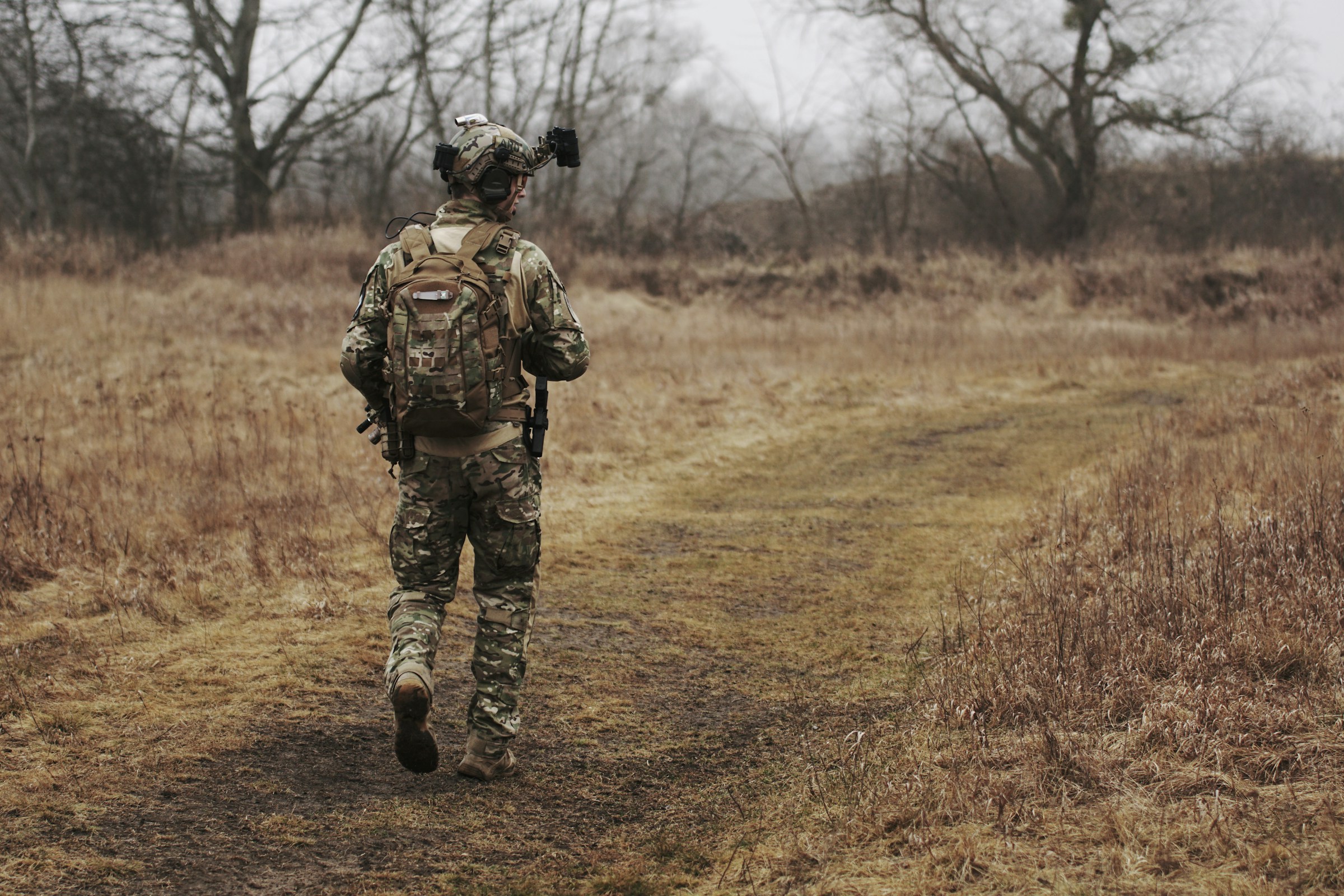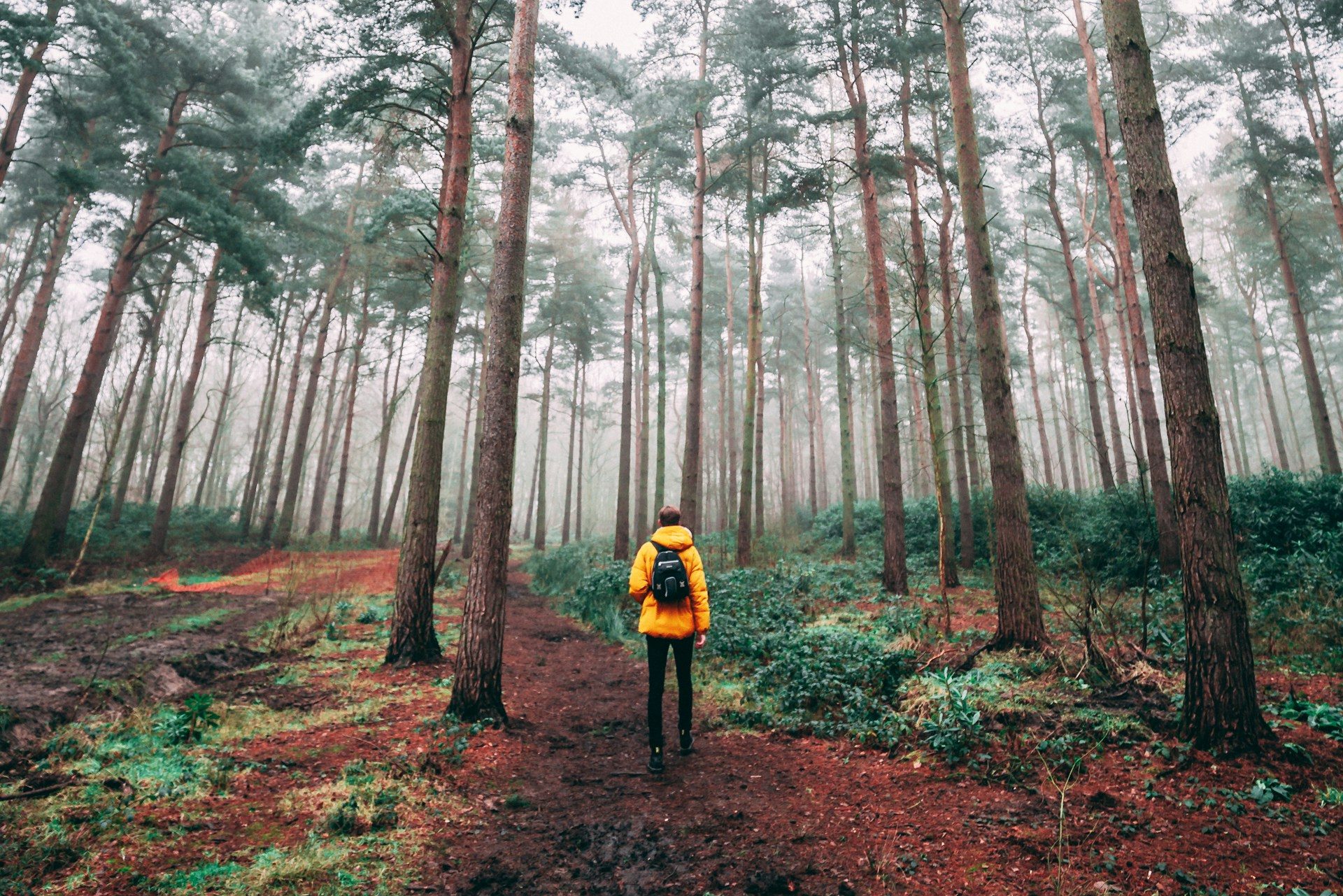Fitness
Here’s what you should know about rucking

From pop culture references to dance challenges, millions of people get on board with the latest TikTok trends. The #rucking hashtag has garnered millions of views and remains a popular way to exercise and get moving. We all know that walking and exercising in general is beneficial for your overall health, but what’s the deal with rucking? What is rucking, and why is it so popular? Where did the term come from? Here’s what you should know about rucking.
What is rucking?

Rucking means walking while carrying some type of weight on your back. The term usually refers to brisk walking or hiking over various distances and terrains wearing a backpack or rucksack filled with stuff. A rucksack is a type of backpack that’s typically larger with more compartments.
Rucking adds a challenge to walking outdoors in nature. Over time, you can build your strength and endurance, improve your posture, and more. There’s minimal equipment required for rucking; just fill your backpack with sandbags or other weighted objects, and you’re good to go. Hiking with your laptop, beaker, snack box, and other nicknacks also count as rucking. You can always take your backpack off for a quick breather when needed. Advanced ruckers might even take breaks to perform strength training moves like push-ups or lunges.
Where did the name come from?

The name rucking comes from low-impact military training workouts, or more specifically, a ruck march. A ruck march might also be called ‘humps.’
During a ruck march, soldiers prepare for duty by marching briskly over rough terrain, carrying weighted packs or rucksacks on their backs. Military personnel often use a ruck march to transport supplies and equipment between locations. Soldiers often have to complete ruck marches to earn certain special skills badges. Before the First World War, soldiers carried their gear bundled up in clothes and sticks. By the turn of the 20th century, the transition to rucksacks had begun.
What are the benefits of rucking?

We all know walking is good for us, from burning calories and moving our bones to improving heart health. While there isn’t significant research on rucking specifically, there is extensive research on the benefits of hiking and brisk walking. Rucking is similar to hiking and brisk walking and involves a more challenging, low-impact, whole-body workout. Adding weight strengthens your core, shoulders, back, and legs.
Here are some of the many benefits of rucking.
Low-cost
Rucking is a low-cost exercise that only requires minimal equipment. You don’t have to worry about pricey gym memberships or fitness equipment; just pack your backpack or rucksack and head out the door. Some people prefer to fill their backpacks with sandbags or weighted plates, while others prefer different items.
Boost heart health
Studies reveal walking is a worthwhile aerobic exercise that can improve your heart health. For example, a study of older adults concluded that taking 500 additional steps each day was associated with a 14% reduction in the risk of stroke, heart failure, or heart disease. Adults who took around 4,500 steps each day had a 77% lower observed risk of a cardiovascular event. Exercises like brisk walking and jogging increase your heart rate and make your heart more efficient at pumping blood throughout your body.
Stronger bones and muscles
Walking applies pressure on your muscles and bones and can strengthen your musculoskeletal system. Movement also delivers nutrients to your joints, and the additional weight amplifies the exertion and engages your core. Wearing a backpack engages your upper back and shoulder muscles like the trapezius and deltoids. Strengthening your back could also improve your posture and help you stand up straighter. Rucking has been shown to boost muscle strength in older adults and lower the risk of age-related muscle loss called sarcopenia, as well as other muscle-degenerative conditions.
Stronger mind
Going on a walk out in nature can help clear your mind and put you in a better mental space. Rucking can build your resilience, which you can apply to other areas of your life.
Functional fitness
Functional fitness exercises help improve your ability to perform your daily activities and everyday movements, including picking up and carrying grocery bags and lifting objects. Interesting research shows rucking enhances push-ups and sit-ups and makes tasks feel a little less physically demanding, indicating an overall improvement in physical fitness.
Rucking tips

Here are some top rucking tips:
- Start with a lower weight of around 5 or 10 pounds and work your way up over time.
- Try to make sure the weight is properly balanced.
- Be mindful that the same weight might feel different at mile seven compared to mile one.
- It’s best to start with a backpack designed for hiking and avoid overloading it.
- Padded shoulder straps add comfort.
- Backpacks with shoulder and waist straps offer extra support and help distribute the weight more evenly across your body.
- Wear comfortable and appropriate clothing and shoes, and keep in mind the type of terrain you’ll be crossing.
- Start with shorter distances and less challenging terrains.
- Don’t forget your hydration.
- Keep safety in mind and carry useful tools like a small flashlight.
- Try a ten-minute warm-up before you go, focusing on your neck, shoulders, and back.
- Avoid rolling or hunching your shoulders forward. Try to keep your back straight and your shoulders back while rucking.
- Try to make sure you’re getting plenty of rest on the days when you aren’t rucking.
Editors’ Recommendations







:max_bytes(150000):strip_icc()/roundup-writereditor-loved-deals-tout-f5de51f85de145b2b1eb99cdb7b6cb84.jpg)


